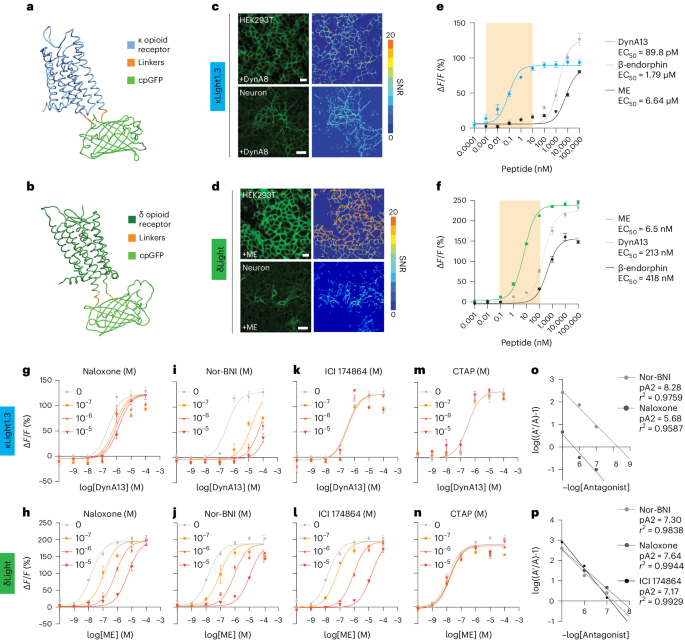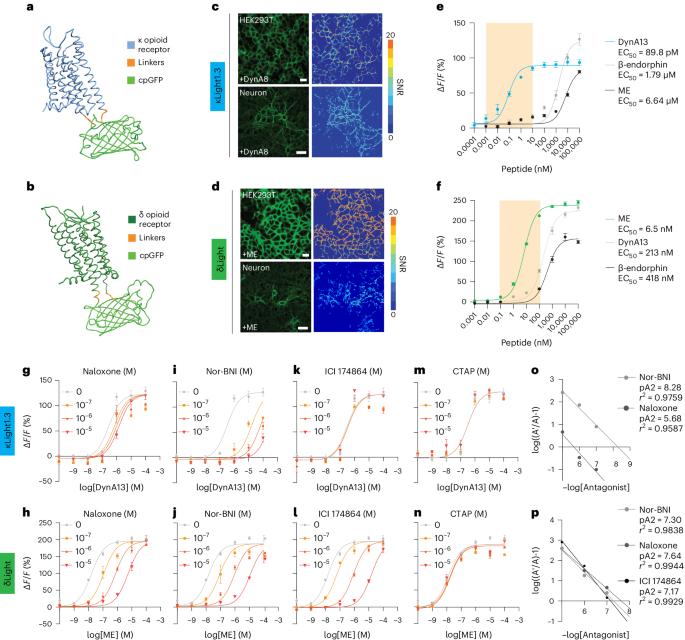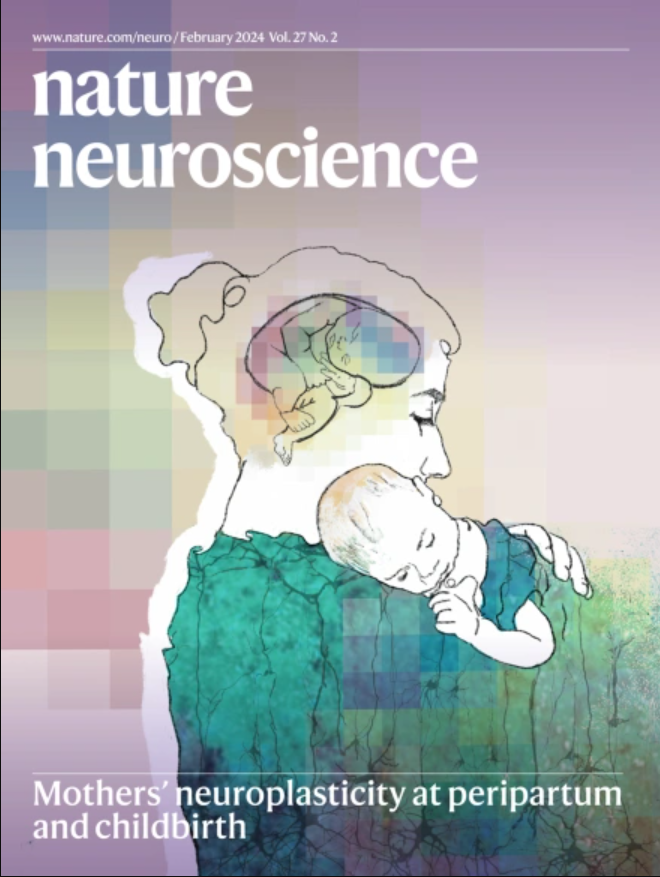Unlocking opioid neuropeptide dynamics with genetically encoded biosensors
IF 21.2
1区 医学
Q1 NEUROSCIENCES
引用次数: 0
Abstract
Neuropeptides are ubiquitous in the nervous system. Research into neuropeptides has been limited by a lack of experimental tools that allow for the precise dissection of their complex and diverse dynamics in a circuit-specific manner. Opioid peptides modulate pain, reward and aversion and as such have high clinical relevance. To illuminate the spatiotemporal dynamics of endogenous opioid signaling in the brain, we developed a class of genetically encoded fluorescence sensors based on kappa, delta and mu opioid receptors: κLight, δLight and µLight, respectively. We characterized the pharmacological profiles of these sensors in mammalian cells and in dissociated neurons. We used κLight to identify electrical stimulation parameters that trigger endogenous opioid release and the spatiotemporal scale of dynorphin volume transmission in brain slices. Using in vivo fiber photometry in mice, we demonstrated the utility of these sensors in detecting optogenetically driven opioid release and observed differential opioid release dynamics in response to fearful and rewarding conditions. Dong et al. developed and validated κLight, δLight and µLight, a suite of genetically encoded opioid peptide sensors for probing opioid drugs and brain-region/circuit-specific opioid release in behaving animals.


利用基因编码生物传感器揭示阿片类神经肽的动态变化
神经肽在神经系统中无处不在。对神经肽的研究一直受限于缺乏实验工具,无法以特定回路的方式精确剖析神经肽复杂多样的动态变化。阿片肽能调节疼痛、奖赏和厌恶,因此具有很高的临床意义。为了阐明内源性阿片信号在大脑中的时空动态,我们开发了一类基于 kappa、delta 和 mu 阿片受体的基因编码荧光传感器:它们分别是κLight、δLight 和 µLight。我们确定了这些传感器在哺乳动物细胞和离体神经元中的药理学特征。我们利用κLight确定了触发内源性阿片类物质释放的电刺激参数,以及脑切片中达莫啡肽体积传递的时空尺度。通过在小鼠体内使用纤维光度计,我们证明了这些传感器在检测光遗传驱动的阿片类物质释放方面的实用性,并观察到了阿片类物质在恐惧和奖励条件下的不同释放动态。
本文章由计算机程序翻译,如有差异,请以英文原文为准。
求助全文
约1分钟内获得全文
求助全文
来源期刊

Nature neuroscience
医学-神经科学
CiteScore
38.60
自引率
1.20%
发文量
212
审稿时长
1 months
期刊介绍:
Nature Neuroscience, a multidisciplinary journal, publishes papers of the utmost quality and significance across all realms of neuroscience. The editors welcome contributions spanning molecular, cellular, systems, and cognitive neuroscience, along with psychophysics, computational modeling, and nervous system disorders. While no area is off-limits, studies offering fundamental insights into nervous system function receive priority.
The journal offers high visibility to both readers and authors, fostering interdisciplinary communication and accessibility to a broad audience. It maintains high standards of copy editing and production, rigorous peer review, rapid publication, and operates independently from academic societies and other vested interests.
In addition to primary research, Nature Neuroscience features news and views, reviews, editorials, commentaries, perspectives, book reviews, and correspondence, aiming to serve as the voice of the global neuroscience community.
 求助内容:
求助内容: 应助结果提醒方式:
应助结果提醒方式:


